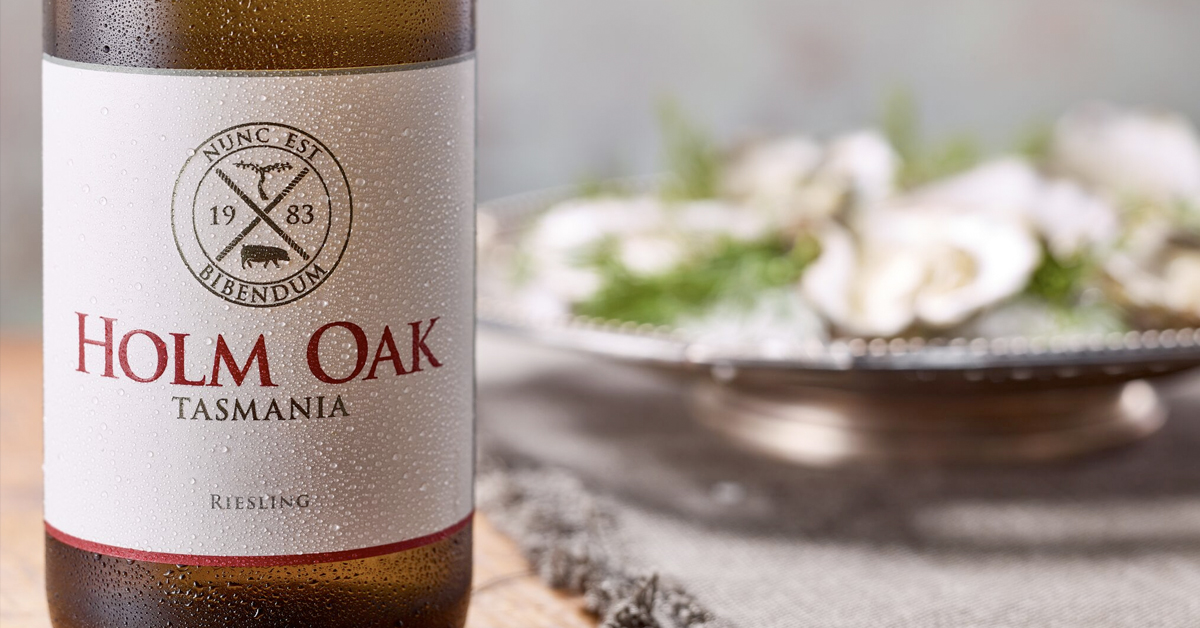All About Riesling

Riesling is respected as one of the finest white grapes in the world, manipulated by winemakers all over the world into a whole range of styles from bone-dry to lusciously sweet. The best wines are incredibly long-lived, elegant and racy, and can become increasingly complex with age.
Riesling reigns in both the old (European) and new (everywhere else) worlds of wine. Its “King of the Grapes” moniker comes from its reputation for being versatile, sturdy and ageworthy, with pure fruit flavours that tell authentic stories of the grapes’ provenance.
Wine enthusiasts call it a ‘noble’ variety, which is another way of calling it an ‘International Variety’ label, as it’s grown and enjoyed in most wine-producing countries of the world. A noble variety also has the ability to evolve into a great wine that speaks volumes of its provenance. At Holm Oak, we grow and produce most of the noble varieties, and Riesling is one of our favourites.
Why is riesling so hot right now?
First, our eating habits have changed over the last decade or so. We’re eating lighter, more health-conscious foods like salads and seafood that lend themselves to wines with clean, zippy fruit flavours discovered in a chilled glass of Riesling. And despite the cool temperatures we experience in Tassie, the rest of the continent sweats through a long, hot summer season, which can begin in September and extend right through to March or April. So it’s a no-brainer that drinking refreshing whites is far more appealing than glugging heavy reds.
Secondly, the way Riesling is being crafted by loads of winemakers these days brings the refreshingly racy flavours to the fore. Take a sip of Holm Oak’s Riesling and bite into a perfectly ripe Pink Lady apple. The balanced fruit flavours are not affected by oak, tannins or other secondary elements. The essence of the wine smacks of pristine cool-climate fruit with palate-cleansing zestiness.
Thirdly, this variety can age. Oh yes it can! When the vineyard and winemaking conditions are right, it can develop complexity for years to come.
How do they age?
So why can Riesling age when other white varieties scream ‘drink me!’ when they clock a year in the cellar? Because Riesling’s naturally occurring high levels of acidity make it primed to develop gracefully over time. (Some German Rieslings have been known to not only age but improve to 100 years of age!)
Certainly not every Riesling has the propensity (or the intention) to age. Generally, with forethought from the winemaker, a Riesling will reach its peak drinking age 15-20 years after its vintage year. Depending on the region in which it’s produced and other factors such as winemaking technique and the wine’s position on the dry-to-sweet spectrum, Riesling can develop lovely flavours and aromas of toast and honey, peaches, nectarines and apricots through the course of ageing.
On the dry end of the spectrum, Rieslings tend to lose their citrus overtones and develop more minerally, smoky characteristics. In sweeter Rieslings, the fruit becomes more subtle as the sugar and the acids integrate, rendering the wine a fuller, richer drop. In fact, high levels of residual sugar in Riesling act as a natural preservative.
All of the above goes a fair way to explaining why Riesling is considered King of the Grapes. The best way to discover its brilliance is to drink it up. So jump over to Holm Oak’s range and try one for yourself.
Holm Oak’s Riesling embodies all the wonders of this noble variety, with amazing aromatics of lime and jasmine, mineral characteristics on the palate and steely acidity all the way through to the very last aftertaste. We dare you not to get hooked.



